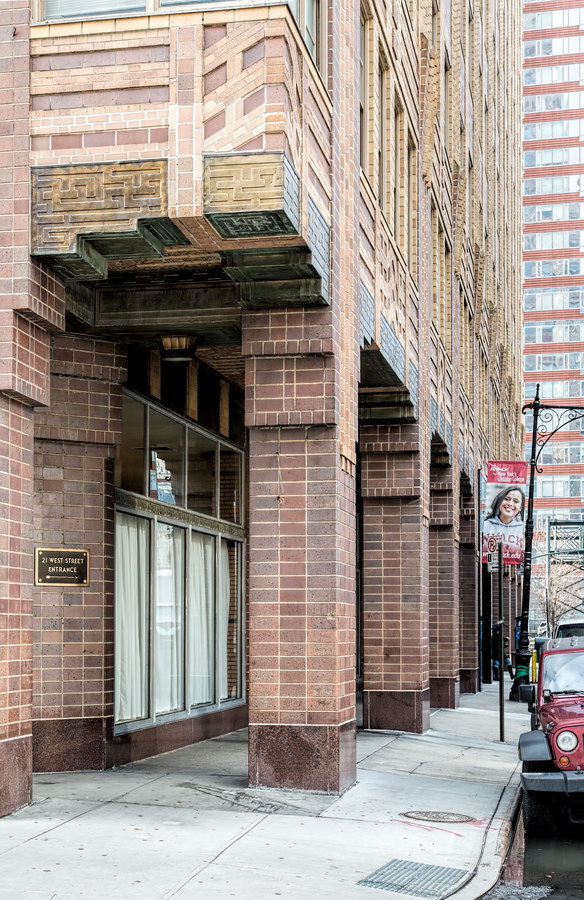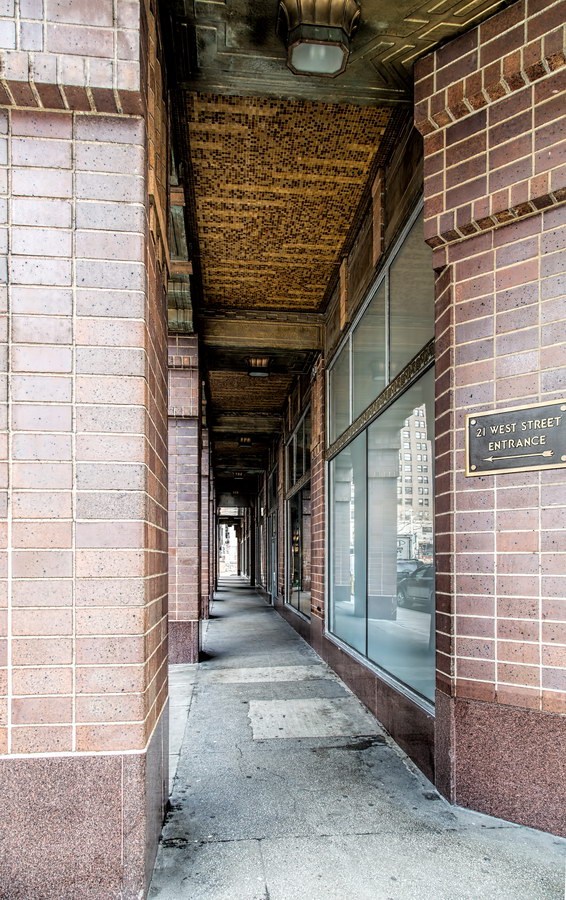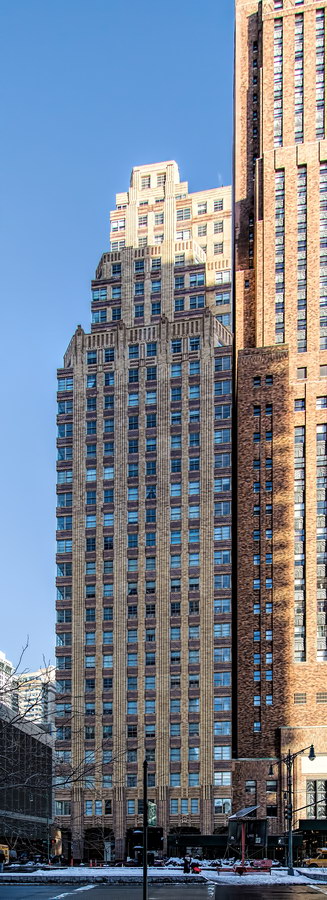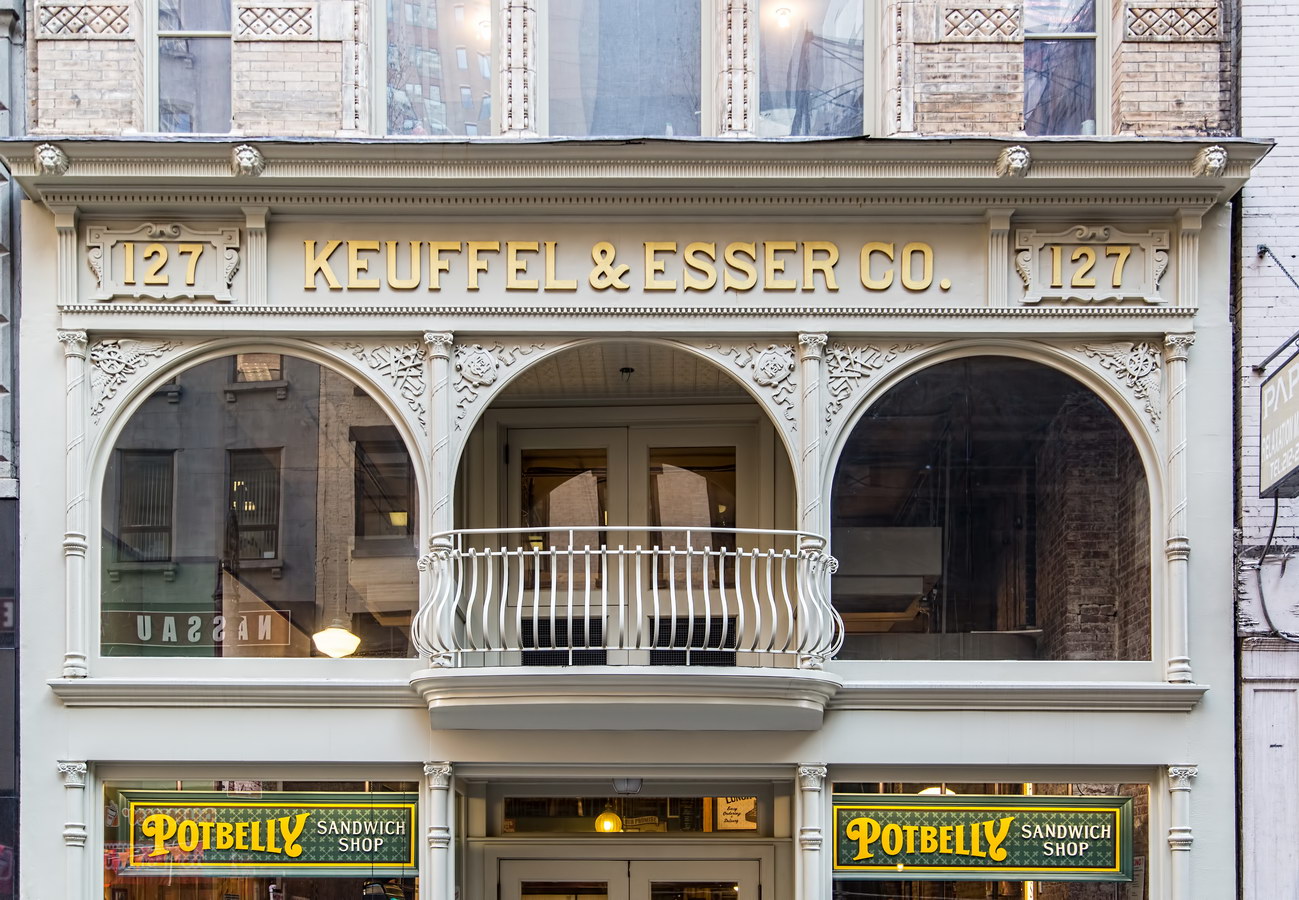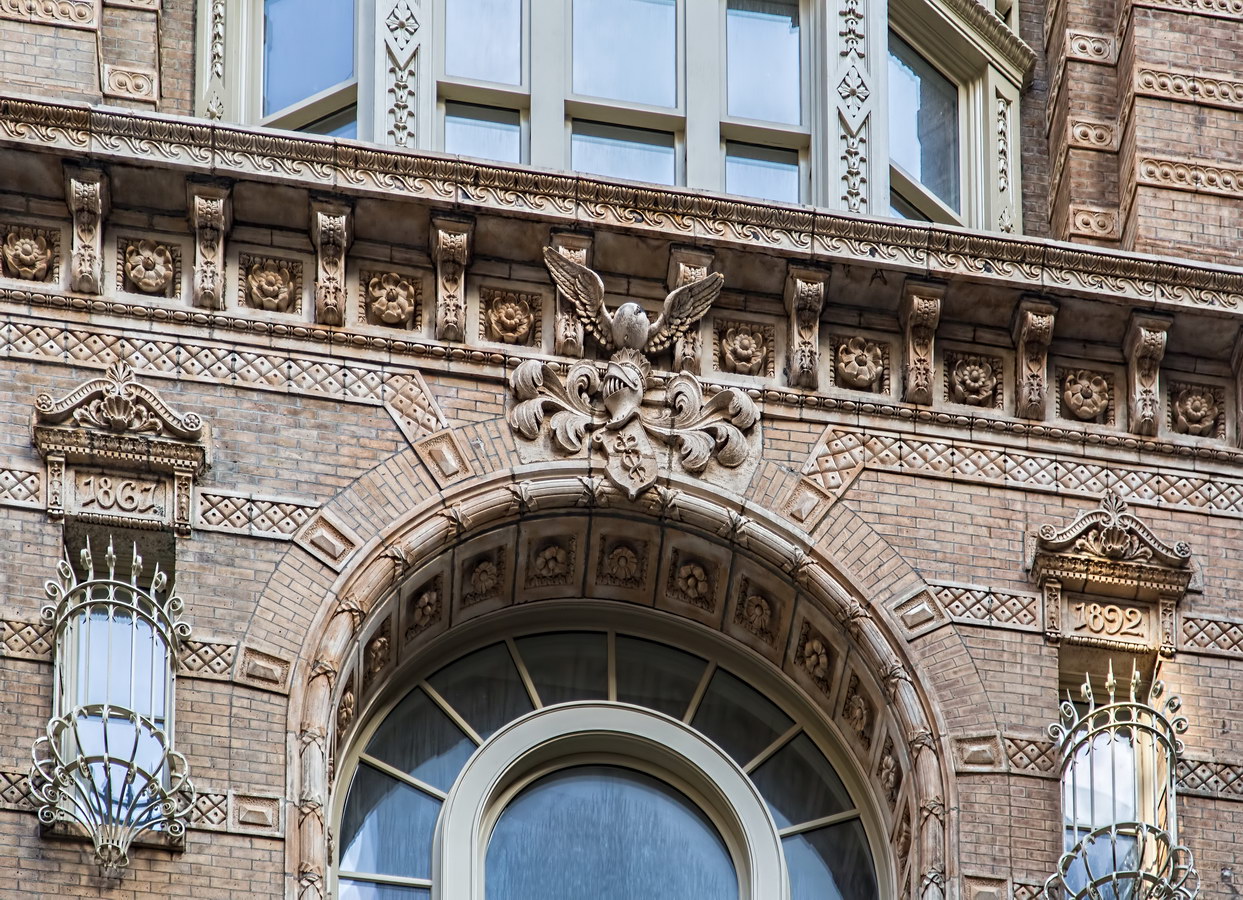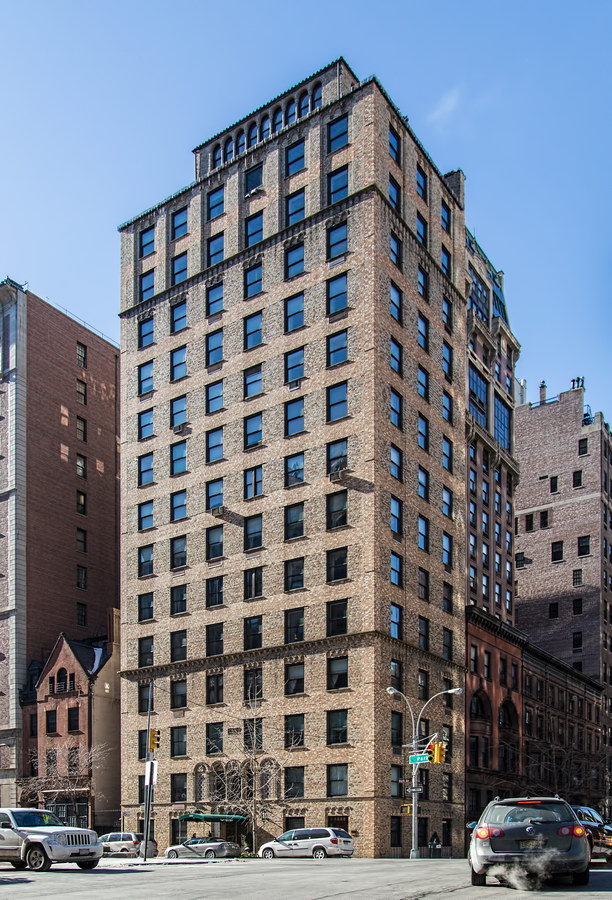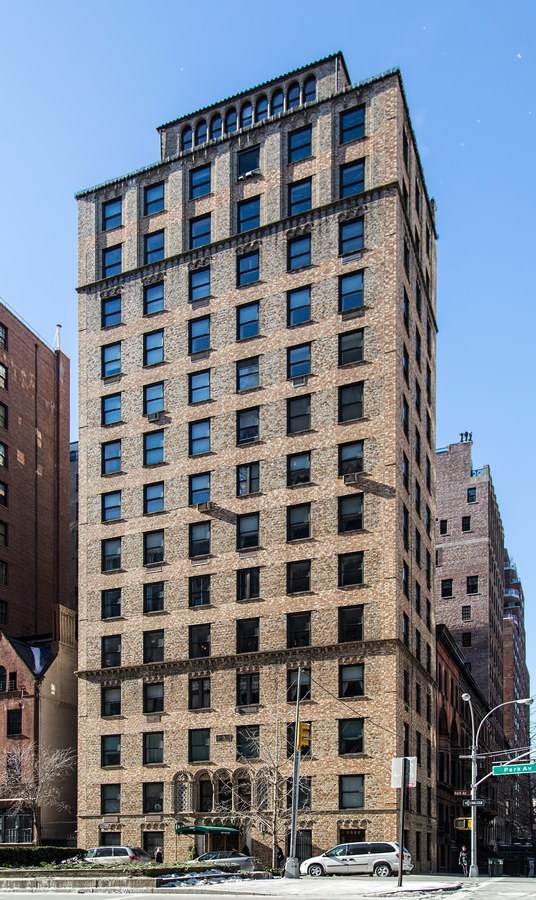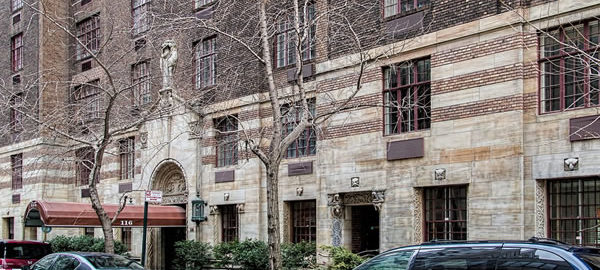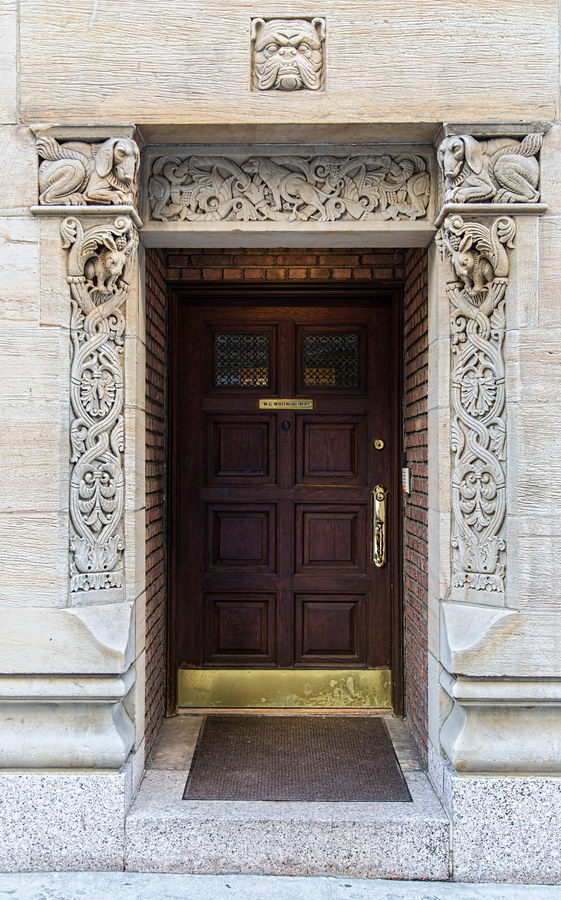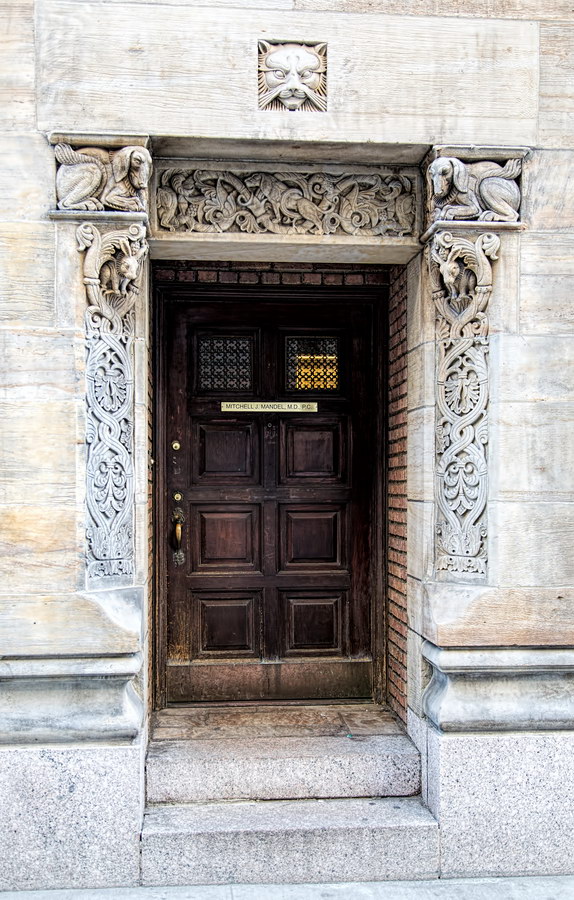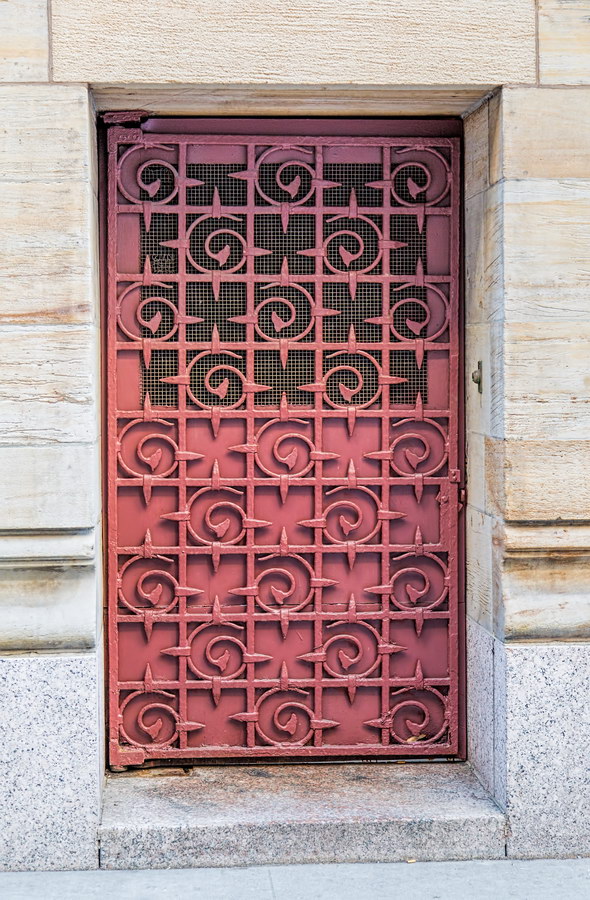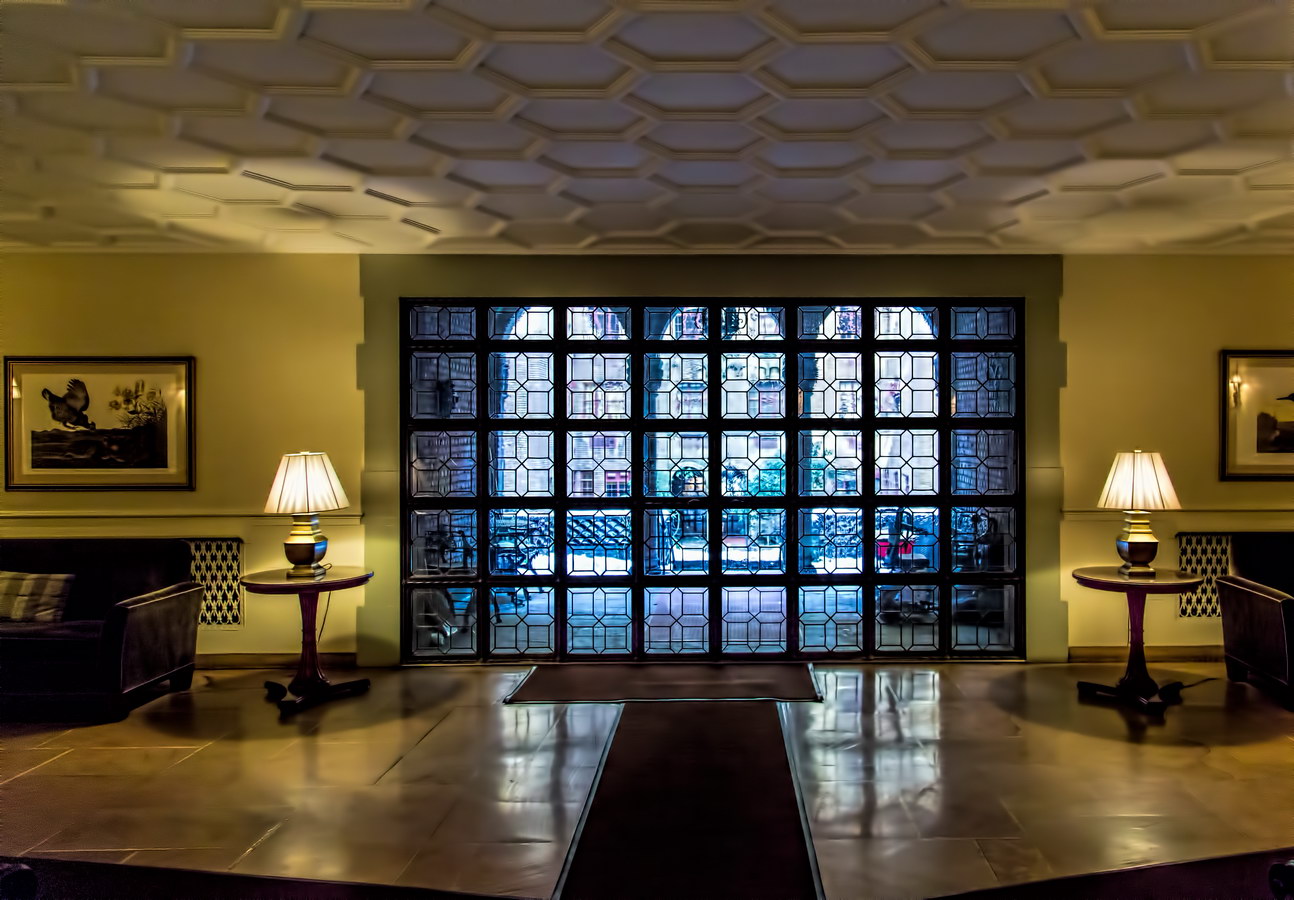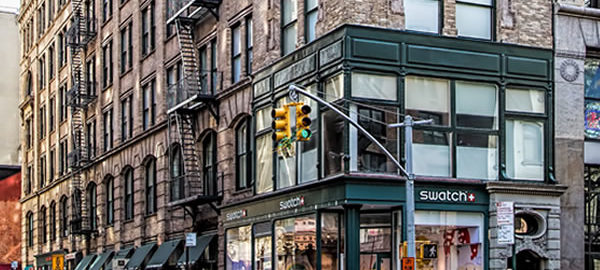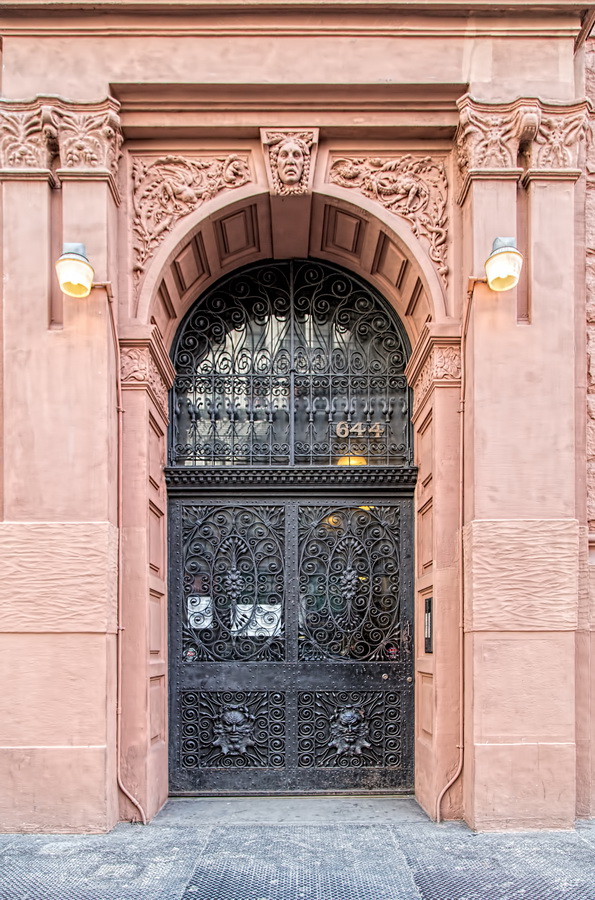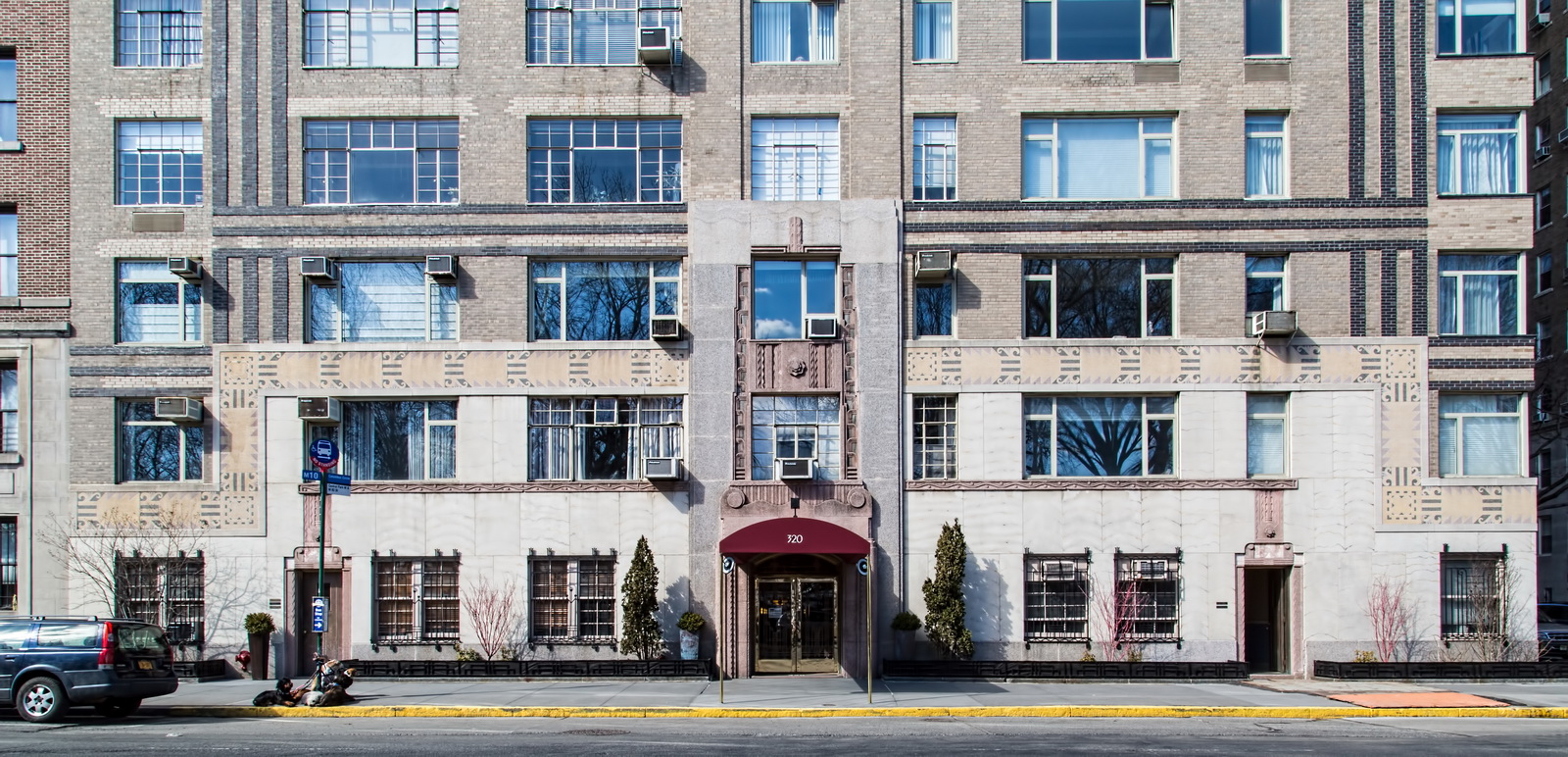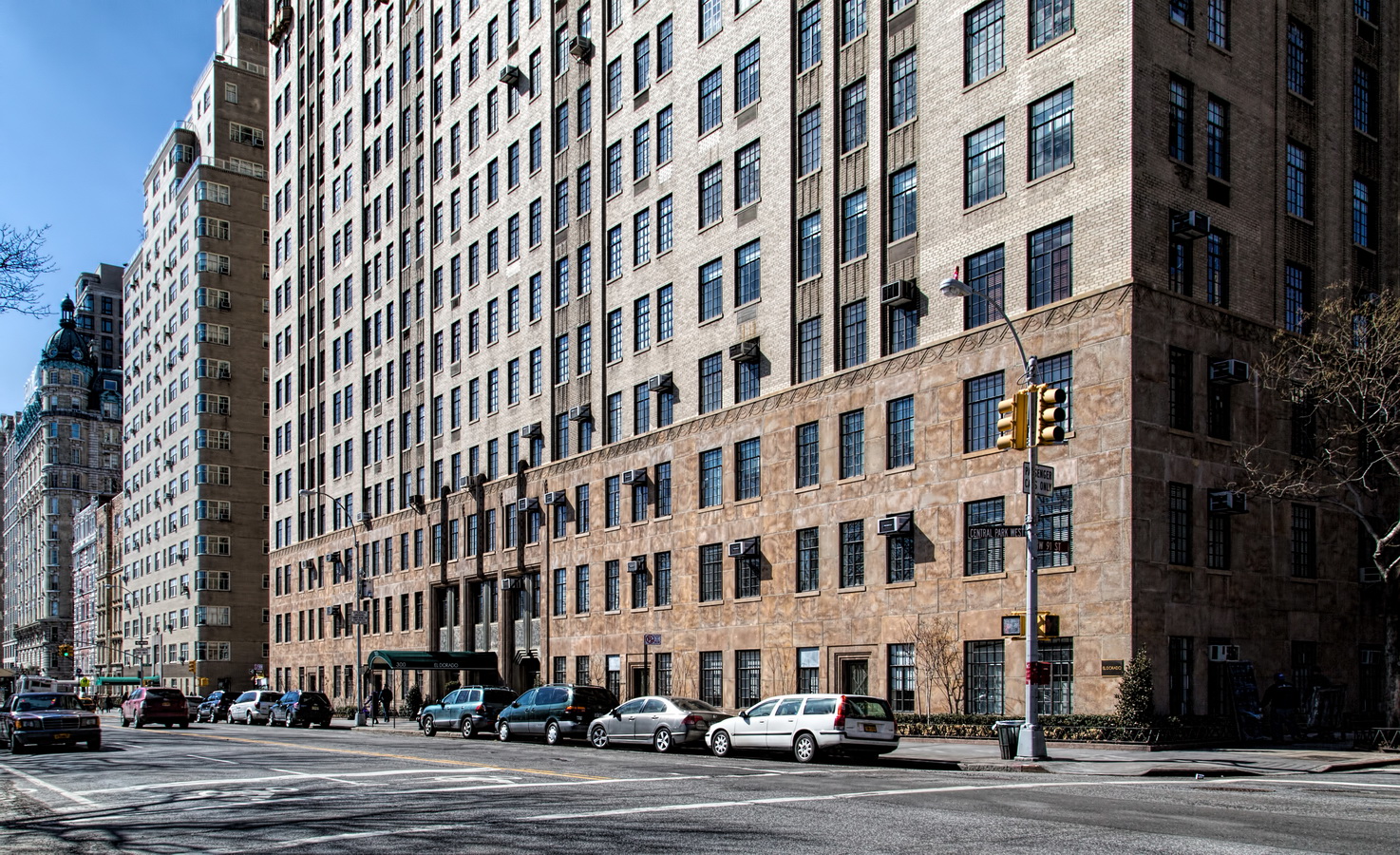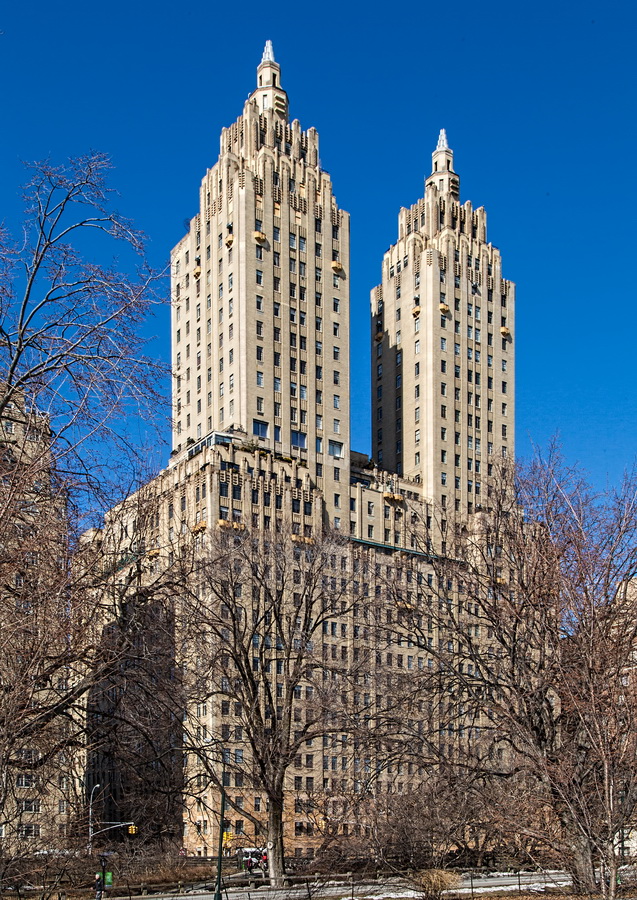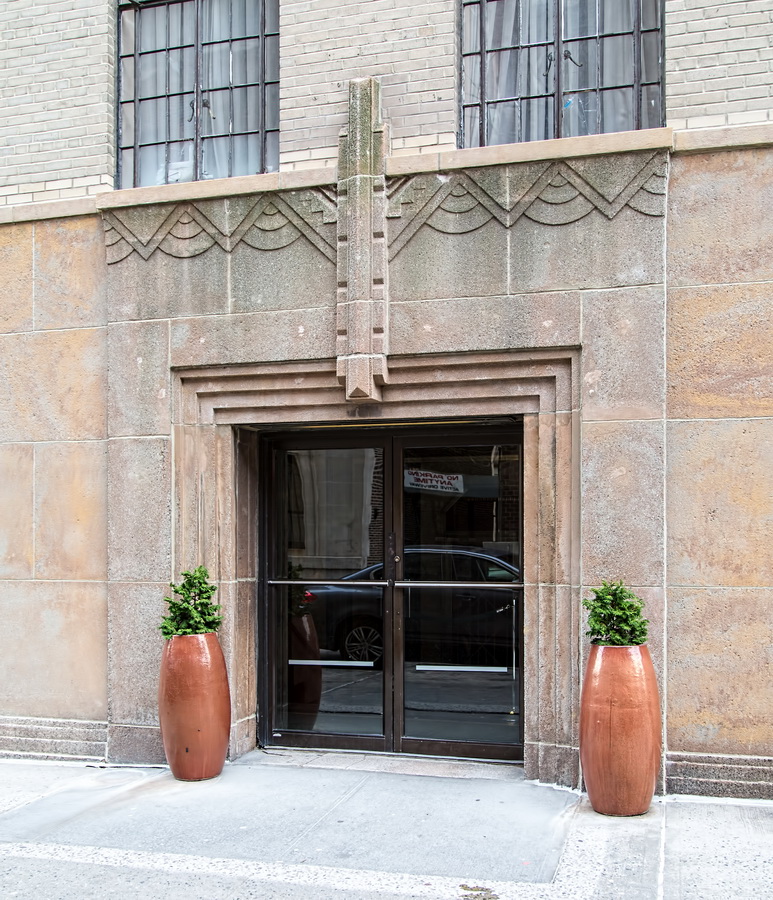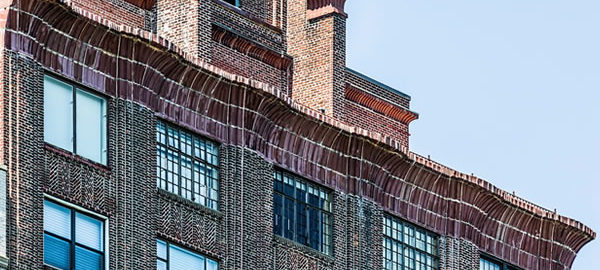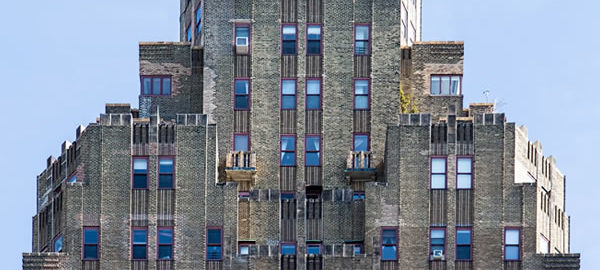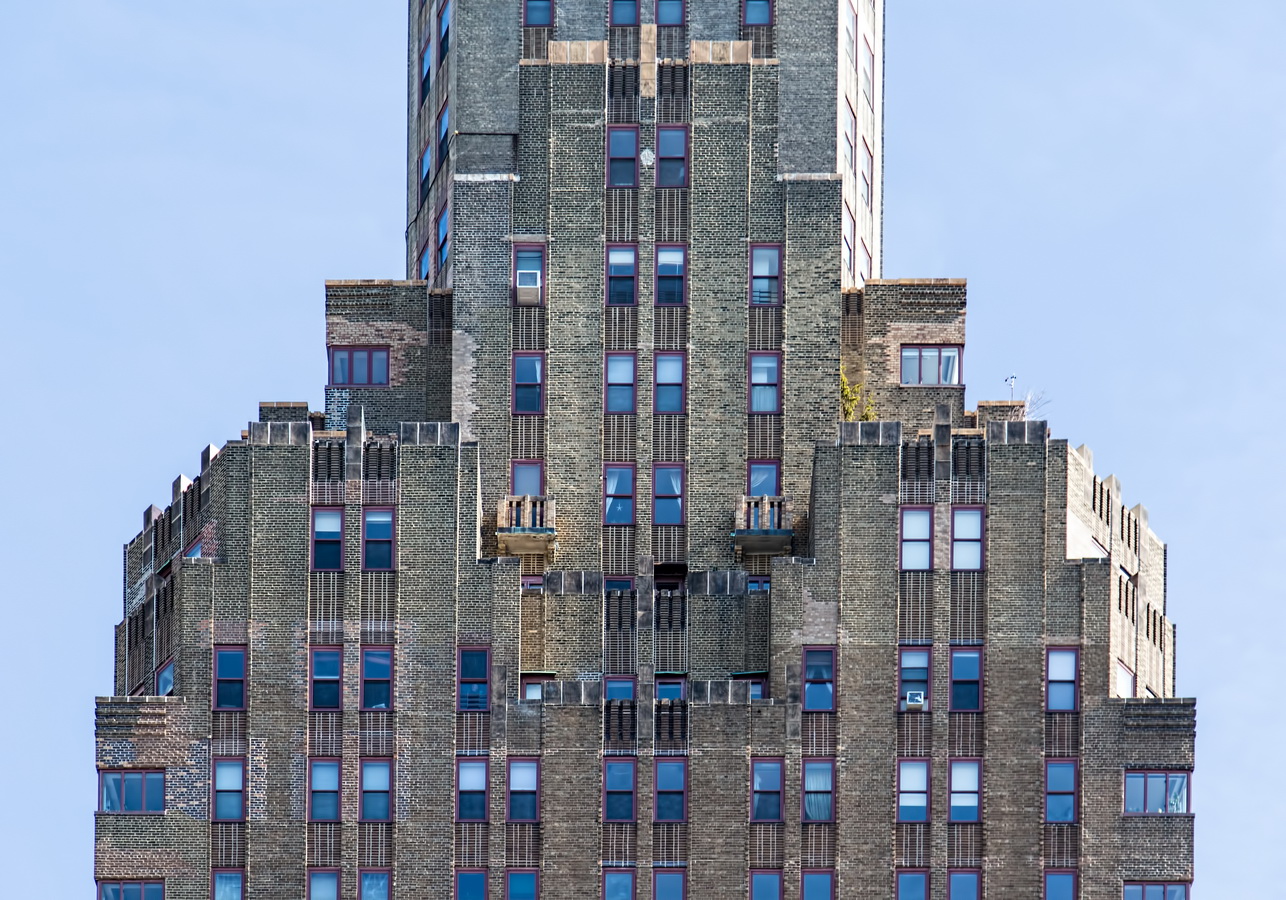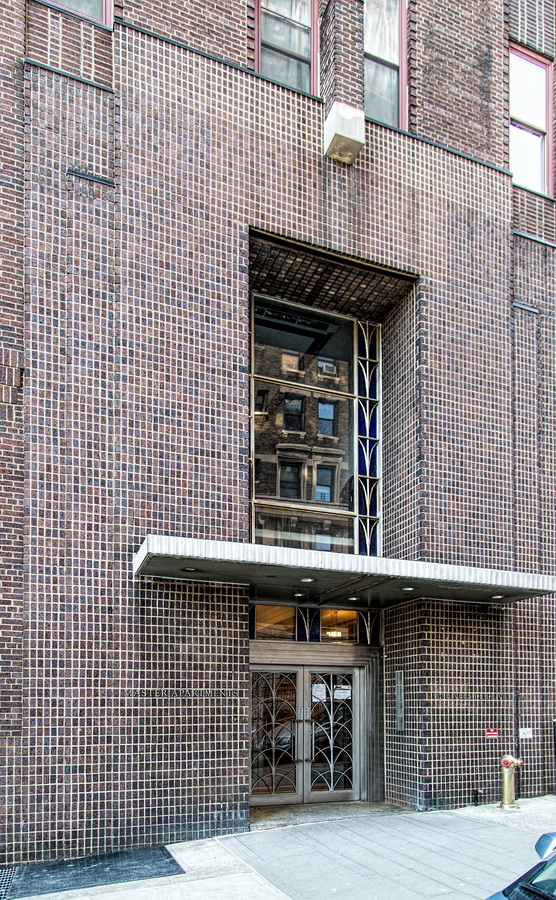21 West Street (aka Le Rivage), a slender 31-story Art Deco landmark, was converted from offices to apartments in 1998. The building complements the adjoining Downtown Athletic Club, designed by the same architects but built five years earlier.
When built in 1931 (at the same time as the Empire State Building), 21 West Street was across the street from the waterfront. Upper-story tenants then had an unobstructed view of the Hudson. Battery Park City was built on landfill placed in 1980 from excavation for the World Trade Center.
The exposed corners of the building are cantilevered, allowing corner windows. The building was promoted as “An office building with glass corners.” The original red window frames have been replaced by a more neutral tan matching the brick surrounds.
Starrett & Van Vleck used different-colored bricks to create a “woven” texture and to accentuate the building’s vertical lines. The Washington Street facade has setbacks at the 10th and 16th floors; all three facades have setbacks above the 21st, 26th, 29th and 30th floors.
21 West Street Vital Statistics
- Location: 21 West Street at Morris Street
- Year completed: 1931
- Architect: Starrett & Van Vleck; conversion: SLCE Architects
- Floors: 31
- Style: Art Deco
- New York City Landmark: 1998
- National Register of Historic Places: 1999
21 West Street Recommended Reading
- Wikipedia entry
- NYC Landmarks Preservation Commission designation report
- City Realty review
- Columbia University Libraries: Real Estate Brochure Collection (early office rental brochures)
- SLCE Architects (conversion) project page
- The New York Times Rose Associates Enters The Conversion Market (July 11, 1997)
- Le Rivage website




